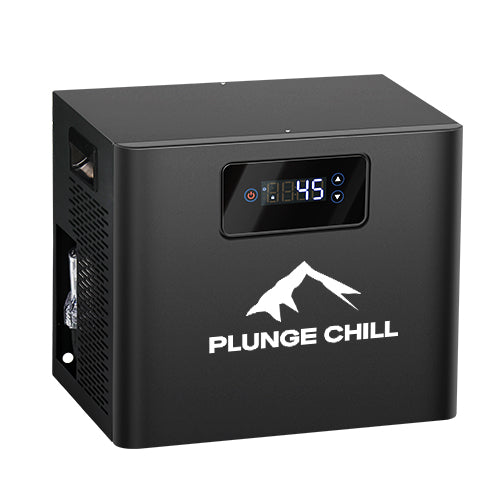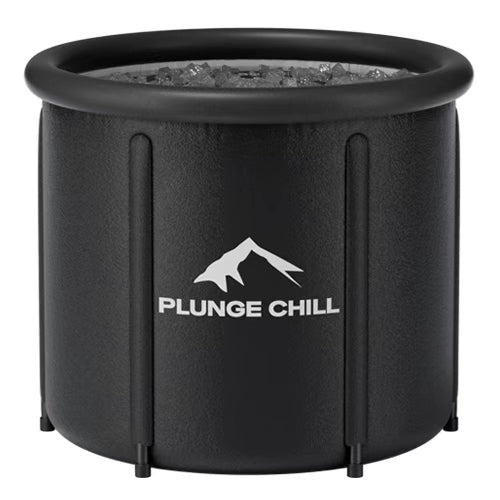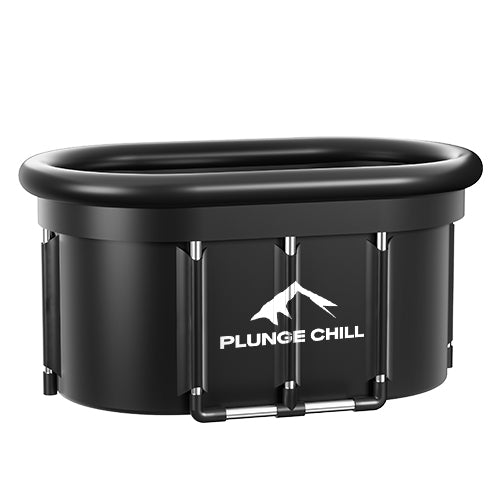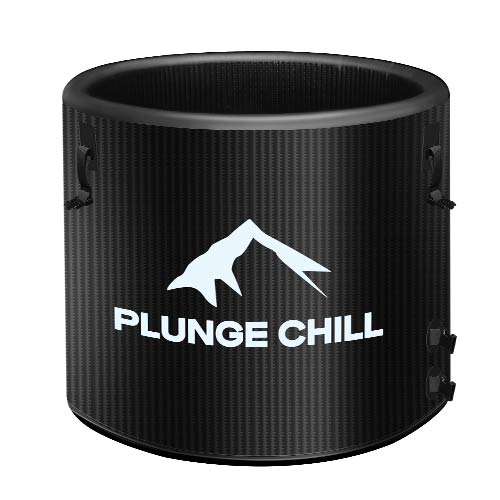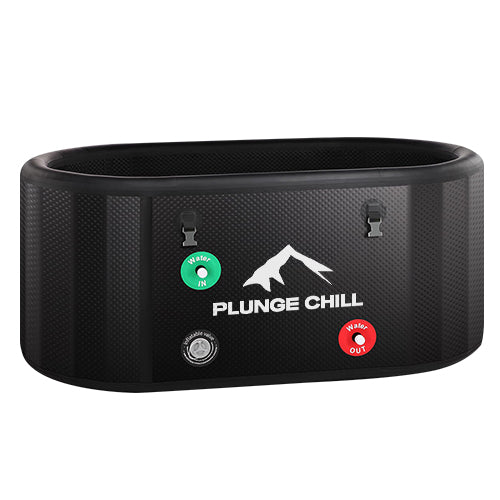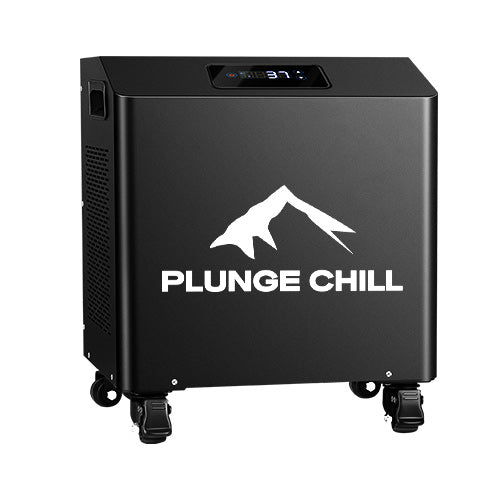In April 2022, Kellie Poole, a healthy 39-year-old, joined a cold water therapy session in a river. Tragically, she collapsed and died upon entering the frigid water. A coroner later determined the shock of the cold water triggered a previously undiagnosed heart condition, leading to her sudden death. While ice baths are praised for their health benefits, Kellie’s story is a sobering reminder that they are not for everyone. This powerful therapy carries real risks for individuals with certain health conditions. Before you take the plunge, it's crucial to understand if this trend is right—and safe—for you.

Are Ice Bath Good for You? Talk to Your Doctor First
Before we dive into specific conditions, let's establish a non-negotiable rule: Always consult a healthcare professional before starting any cold plunge therapy. This isn't just a suggestion, but the most critical safety step you can take.
A doctor understands your complete health history, including underlying issues you might not be aware of. They can assess your cardiovascular health, circulatory system, and overall resilience to the intense physical stress a cold plunge induces. What is a beneficial practice for one person can be dangerous for another. A quick conversation with your doctor can provide personalized guidance, helping you avoid serious complications and ensuring your wellness journey is a safe one.
Heart Disease & High Blood Pressure: The Chilling Risks
The primary danger of a cold plunge lies in its immediate and dramatic effect on the cardiovascular system. For individuals with heart conditions or high blood pressure (hypertension), this shock can be overwhelming.
The Science Explained: The "Cold Shock Response"
When your body is suddenly submerged in icy water, it triggers an involuntary reaction called the "cold shock response." Here’s what happens in seconds:
- Involuntary Gasp Reflex: You’ll take a sharp, uncontrollable gasp for air. If your head is underwater, this can lead to drowning.
- Hyperventilation: Your breathing rate skyrockets.
- Skyrocketing Heart Rate and Blood Pressure: Your blood vessels near the skin constrict (vasoconstriction) to conserve heat. This forces your heart to work much harder to pump blood through a smaller network of vessels, causing a rapid spike in both heart rate and blood pressure.
For a healthy heart, this is a temporary stressor. But for someone with a pre-existing condition like coronary artery disease, arrhythmias, or hypertension, this sudden load can be catastrophic. According to the American Heart Association, this response can potentially lead to a heart attack or stroke. The intense strain is simply too much for a compromised system to handle.
Raynaud's and Poor Circulation: When Cold Is a Trigger
If your fingers and toes turn white or blue and go numb in the cold, you may have a condition called Raynaud's disease. This disorder causes blood vessels in the extremities to narrow excessively in response to cold or stress.
The Science Explained: Exaggerated Vasoconstriction
An ice bath is a serious trigger for people with Raynaud's disease. But why do their blood vessels react so much stronger than normal people?
People with Raynaud's have too many cold sensors in their blood vessel walls. These sensors detect cold and send signals to make blood vessels close up. Normal people have the right amount of these sensors, so they get a normal response to cold. But people with Raynaud's have way too many sensors, so even small amounts of cold create a very strong "shut down" signal.
When cold hits these extra sensors, they release much more of the chemicals that make blood vessels close. This causes the blood vessels to squeeze shut almost completely, cutting off blood flow to fingers and toes. Without blood bringing oxygen, these areas start to hurt, go numb, and can get damaged.

A Cautionary Checklist for Other Conditions
Beyond heart and circulatory issues, several other groups should exercise extreme caution or avoid cold plunging altogether. Here’s a checklist of conditions and the science behind the risks.
Pregnancy
The Risk: A cold plunge causes big changes in blood flow and puts the body under extreme stress. During pregnancy, it's best to avoid any activity that could take blood away from the baby or cause unnecessary stress to the growing fetus.
The Science:
The baby's temperature is always higher than the mom's - about 0.5°C (0.9°F) warmer. This happens because the baby makes heat from growing, and this heat has to move through the placenta to the mom's blood. When you jump into freezing water, your blood vessels close up tight to save heat for your most important organs. This means less blood will go to the placenta, the part that gives your baby oxygen and food.
Children and Older Adults
The Risk: Both younger and older individuals have a harder time regulating their core body temperature, making them far more susceptible to hypothermia (a dangerous drop in body temperature).
The Science:
Children have a larger surface area to body mass ratio, so they lose heat faster than adults. In simple terms, when you compare kids to adults, kids have more skin area for each kilogram of body weight. This makes their body temperature drop much faster than adults in cold water, which results in a higher risk.
Older adults often have reduced ability to sense temperature changes, and their blood vessels don't tighten up as well when it's cold. As people get older, the body warning system for temperature gets weaker, and the blood vessels can't squeeze tight enough to keep heat in. So elderly people may not realize they're getting too cold until it's too late, and at the same time their bodies can't fight off the cold as well as younger adults can.
Cold Urticaria
The Risk: This is a literal allergy to the cold. Exposure can trigger a severe allergic reaction.
The Science:
For people with cold urticaria, cold water works like any other allergen, just like how some people are allergic to nuts or bee stings. When their skin touches cold water, their immune system thinks it's under attack and fights back.
The body releases special chemicals into the blood that cause allergic reactions. These are the same chemicals that make people sneeze, get watery eyes, or break out in rashes during regular allergies. The cold triggers red, raised bumps (hives) to appear on the skin wherever the cold touched. The bumps are itchy and can show up within minutes.
In the worst cases, jumping into very cold water can cause a whole-body reaction. Swelling of the throat and a massive drop in blood pressure (anaphylaxis) can happen when large areas of skin are exposed to cold. The throat swelling makes it hard to breathe. The blood pressure drops so low that the person can faint or go into shock. This life-threatening emergency can lead to drowning if it happens in water.
History of Frostbite
The Risk: Areas of your body that have been previously frostbitten are much more vulnerable to cold injury.
The Science:
Frostbite can cause permanent damage to blood vessels and nerves. When skin and tissue get frostbitten, ice crystals form inside the cells and damage them. Even after the area heals, the blood vessels and nerves don't work the same way they did before.
The damaged blood vessels can't carry blood as well as they used to, so less blood flows to that area. The damaged nerves can't sense temperature and pain as well, which is like having a broken warning system. This makes the area weaker and less able to protect itself from cold.
Diabetes and Nerve Damage (Neuropathy)
The Risk: Diabetes can hurt the nerves in your hands and feet. This makes it hard to feel things properly.
The Science:
High blood sugar hurts the nerves that tell your brain about touch, pain, and hot or cold. When these nerves get hurt, people can't feel things like they should. This problem usually starts in the feet and legs first, then can spread to hands and arms.
The hurt nerves can't send normal warning signals to the brain. If someone with this nerve damage puts their foot in freezing water, they might not feel how cold it is. They might not realize that their skin is getting damaged. They could get serious cold injuries like frostbite without knowing it's happening.
When to Take a Rain Check on Your Plunge
Sometimes, even healthy individuals should skip the ice bath. Cold plunging is a stressor, and you should never add it to a body that is already compromised. Avoid plunging in these situations:
- After Drinking Alcohol: Alcohol impairs your body's ability to regulate its temperature and can cause you to lose heat faster. It also impairs your judgment, which is a dangerous combination when dealing with extreme temperatures.
- With Open Wounds or Skin Infections: Submerging an open wound in water can introduce bacteria and lead to a serious infection. Furthermore, the intense vasoconstriction can reduce blood flow to the area, slowing down the natural healing process.
- When You're Sick or Fatigued: If your body is already fighting off an illness or is exhausted, adding the intense stress of a cold plunge can weaken your immune system further and hinder your recovery.

Your Ultimate Safety Checklist Before You Plunge
If you and your doctor have determined that cold plunging is safe for you, following a strict safety protocol is essential for reaping the benefits without the risks.
- Get Medical Clearance: We've said it before, but it’s the most important rule. Get a doctor’s approval.
- Start Slow: You don't need to start with a tub full of ice. Begin with cool water (around 60°F / 15°C) and gradually decrease the temperature over many sessions.
- Keep it Short: Limit your first few plunges to just 1-3 minutes. You can slowly work your way up to longer durations as your body adapts, but never exceed 10-15 minutes.
- Never Plunge Alone: Always have someone nearby who can help you in case you have an adverse reaction.
- Listen to Your Body: Pay attention to the signals. Shivering is normal, but if it becomes uncontrollable, or if you feel dizzy, lightheaded, or confused, get out immediately.
- Warm Up Gradually: After your plunge, don't jump into a hot shower. The rapid temperature change can cause dizziness or fainting. Dry off, put on warm clothes, and let your body warm up slowly. A warm (not hot) drink can also help.
The Final Word on Cold Plunge Safety
Cold plunging is a powerful way to reduce pain, boost mood, and help your body recover. But it can be dangerous if you're not careful. For people with health problems, the risks can be much greater than the benefits. Knowing your own health is the most important thing before you try cold therapy.
Always talk to your doctor first and follow safety rules. This way you can make a smart choice and stay safe. If you're ready to try cold therapy the right way, Plunge Chill makes it easy to get started safely at home with equipment that's both high-quality and affordable. Begin your cold therapy journey with safety and confidence.
Frequently Asked Questions (FAQs)
Q1. What does an ice bath actually do to your body?
An ice bath causes your blood vessels to constrict (vasoconstriction), which helps reduce inflammation and swelling in muscles and joints. When you get out, the vessels dilate, flooding your muscles with fresh, nutrient-rich blood. This process is believed to help flush out metabolic waste from your muscles. The shock of the cold also triggers the release of endorphins, which can lead to feelings of euphoria and alertness.
Q2. How long should you stay in a cold plunge?
For beginners, 1 to 3 minutes is a great starting point. The goal is to stimulate your body, not to endure pain. As you become more accustomed to the cold, you can gradually increase your time, but it's rarely necessary to stay in for more than 10-15 minutes. Always prioritize what your body is telling you over what the clock says.
Q3. Is cold plunge therapy really good for you?
Yes, for the right person, cold plunge therapy offers significant benefits, including reduced muscle soreness, decreased inflammation, and improved mental resilience. However, the key phrase is "for the right person." When done safely with proper equipment like Plunge Chill's temperature-controlled chillers, cold therapy can be an effective tool for recovery and wellness.
But the benefits are only accessible if the practice is safe for your health status. If you have any of the conditions mentioned in this article, the risks will likely negate any potential rewards.
Q4. Can I cold plunge if I just have a common cold?
It's generally not recommended. While some people feel an energy boost, your body is already working hard to fight off the virus. A cold plunge is an intense physical stressor that can put an additional strain on your immune system. It's better to rest and let your body focus all its energy on recovery.
